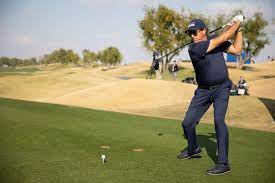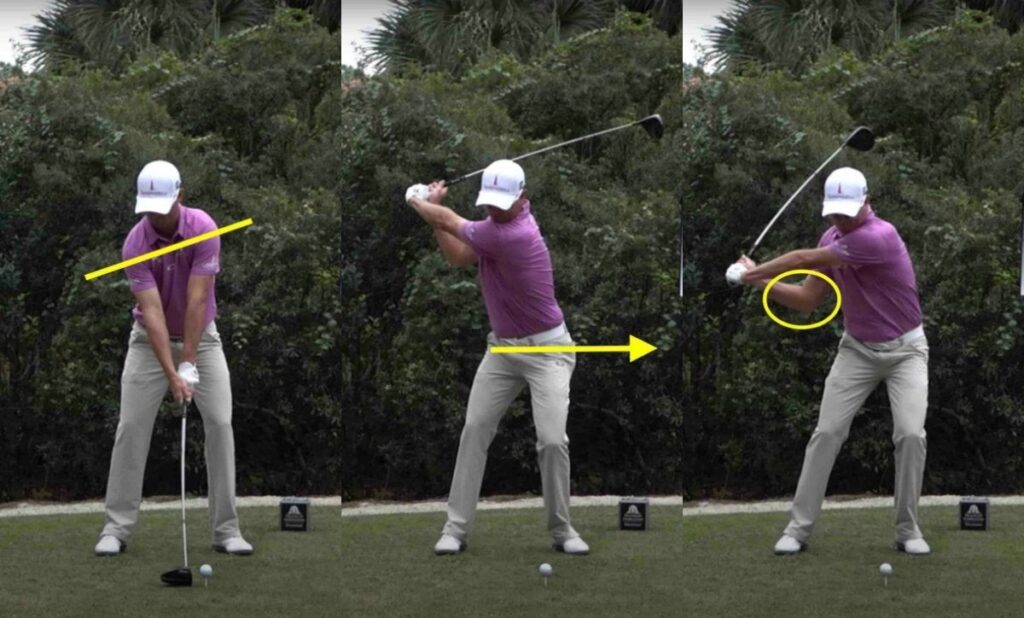Every pro that we see on TV has an amazing straight leading arm during their backswing and downswing. They depend on their straight arm for consistency and added power. So why is it that we also see some recreational golfers who consistently bend their leading arm and still play a pretty good game of golf?
I have been working on a straight leading arm swing for years. That’s why I developed GOLFSTR+. I needed a training aid that I could use during my practice rounds of golf as a constant reminder to keep my leading arm straight in the backswing.
Realizing that I had limited spine and shoulder rotation, I started using one of the Golf-Info-Guide exercises to train my body to rotate. I use my trailing arm to pull the elbow of my straight leading arm across my chest as I rotate my spine. It’s just a great stretching exercise. I still have limited overall rotation (due to age and upper body injuries) but my straight arm swing is crutial for consistent drives and fairway shots. It forces me to coil my upper body for a more powerful swing release.
My wife has a much worse problem with spine rotation as a result of a major auto accident (with the help of the Mount Vernon injury claims attorneys, the compensation was claimed at the right time). She almost wraps her leading arm around her neck and releases her arm with tremendous power for her driver. I have never tried to change her swing as her neck is fused and her drives are very consistent as she is able to straighten out her leading arm before impact with the ball.
Unfortunately she has lost the ability to straighten out her leading arm for her iron shots. Her lighter irons don’t extend her leading arm as easily as her driver so she is either hitting off her trailing leg (as she does not shift her weight to her leading leg) or she tips the ball off the toe of her club with her shortened bent leading arm.
Problem: Aging golfers have less flexibility to coil their hips and spine so they compensate by bending their leading arm for a longer backswing.
Solution: Use your feet, hips and shoulders to rotate your body with a straight leading arm. Avoid bending your leading arm by using body rotation and less arm rotation.

1/ Start your backswing with a slight lift of your leading heel as you bend your leading knee to increase the rotation of your hips and to prevent your head from swaying back
2/ As you hinge your flat wrists for lag at the top of your swing, shift your weight into your leading foot and focus on a balanced finish [as recommended by Danny Maude].
3/ You need a straight arm at the point of impact for a consistent hit and more power as you release your wrists.
If you aren’t bending your leading knee at the start of your backswing, your aren’t getting enough rotation with your hips to allow for a sweeping shallow swing instead of a chopping downswing. Practice with GOLFSTR+ for the straight leading arm. Buy one today at www.GOLFSTR.com.
Golf Truism #60: If there is a ball on the fringe and a ball in the bunker, your ball is in the bunker. If both balls are in the bunker, yours is in the footprint.




